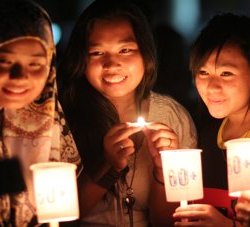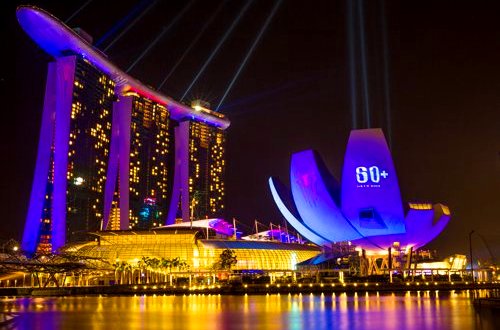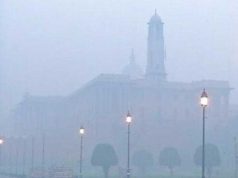 The entire world witnessed the Earth Hour phenomenon sweep across the planet in its eighth year, as Earth Hour 2014 broke all records of mass participation across the world and hundreds of millions of people became everyday super-heroes for the planet.
The entire world witnessed the Earth Hour phenomenon sweep across the planet in its eighth year, as Earth Hour 2014 broke all records of mass participation across the world and hundreds of millions of people became everyday super-heroes for the planet.
Earth Hour 2014 proved the movement is now stronger than ever with the event observed in over 162 countries and over 7000 cities, creating magical lights off moments in every continent of the world. The symbolic hour has grown into the world’s largest grassroots movement for the environment, with beyond the hour activities and initiatives happening throughout the year.
“It’s always extraordinary to see cities and landmarks involved in the ‘lights off event’, but the most exciting thing about Earth Hour this year is seeing the amount of projects and campaigns that are taking action beyond the hour. From crowdfunding to campaigns to protect the Great Barrier Reef or the Amazon, Earth Hour is harnessing the power of the crowd far beyond the hour,” said Andy Ridley, CEO and Co-Founder of Earth Hour.
Last year alone saw thousands of Argentineans petition to pass a senate bill to protect a marine area 28 times the size of New York City and WWF-Uganda began the fight against the 6,000 hectares of deforestation that occurs in the country every month by creating the first ‘Earth Hour Forest’. In 2012, Russians also petitioned to get legislative change protecting the country’s seas from oil pollution and now are striving to protect an area of forest twice the size of France.
These Earth Hour success stories illustrate the movement has become a global collaboration to show what can be achieved for the planet.
Here is how Earth Hour was celebrated across the world in 2014:
Earth Hour began its journey setting off celebrations, in New Zealand, where community events were held all over the islands. Moving across to Fiji where the islanders were hit with Earth Hour fever and the country held a fundraising dinner, hosted by President Ratu Epeli Nailatikau.
The hour of inspiration went back to its humble beginnings when Earth Hour once again hit the shores of Australia bringing to light the plight of one of the greatest natural wonders on the planet – The Great Barrier Reef. This iconic wonder is under great threat due to climate change and the recently approved government decision to develop a mega coal and gas port that would cause dredging and dumping of millions of tonnes of seabed and rock in its marine park.
To drive action and support, a new documentary “Lights Out for the Reef” was screened across many famous locations including Melbourne, Perth and Sydney, as well as engaging people around the world to add their voice and use their power to protect this iconic wonder.

Continuing to the home of Earth Hour, Singapore celebrated the event empowering the crowd with the message that people are the true every day super-heroes of the planet. Using none other than Spider-Man to join the global flagship event, the stars of The Amazing Spider-Man 2, Andrew Garfield, Emma Stone and Jamie Foxx inspired a fired-up crowd to take a stand to protect the planet.
“To have witnessed Earth Hour from Singapore, the home of this WWF organised event, made a powerful impression on me,” said WWF Director General Designate, Dr. Marco Lambertini from Singapore. “To see people united in a single purpose of making our lifestyles less impactful on the planet inspires me immensely. Right now, Earth Hour is moving across the globe, following the setting sun, sending billions of people around the world a message that each of us has the power to make a difference. Each of us can be a Superhero for the planet.”
In China, Earth Hour drew attention to the “Blue Sky”, and the need to reduce air pollution and smog. The public were encouraged to send in ideas in order to inspire change towards healthier air.
The lights off event then swept across the east, gaining momentum and switching off lights at India’s landmark monuments such as Lotus temple in New Delhi, and The Gateway of India in Mumbai. Earth Hour in India kicked off a year-long educational project that will take place in 15,000 schools across the country, which will help to reduce carbon footprint by recording carbon output, whilst educating children on the value of efficient energy use.
As participants across the United Arab Emirates were encouraged to make the switch to energy efficient lighting, which has been an outcome-driven focus in the lead up to the event, the world’s tallest building – the Burj Khalifa – and Shaikh Zayed Grand Mosque switched off their lights.
Showing that the movement reaches all corners of the globe, an event in front of the Khaju Bridge in Isfahan – Iran, will drive action and support about the plight of the famous Zayanderud River, where there has been no continuous water flow for the past few years due to climate change and other factors.
WWF-Russia called on people around the world to help support field projects that are working to save five key species of animals in the region, including the critically endangered Amur Leopard. By a decision of the Presidential Administration, the Kremlin, the official residence of the Russian President, and Red Square turned off lights during Earth Hour for a second time.
“Russian cosmonaut Mikhail Tyurin has also recorded a message from the International Space Station, reminding the world that whilst the planet looks amazing and beautiful from space, it also looks fragile and therefore people should do their part to protect it.”

















